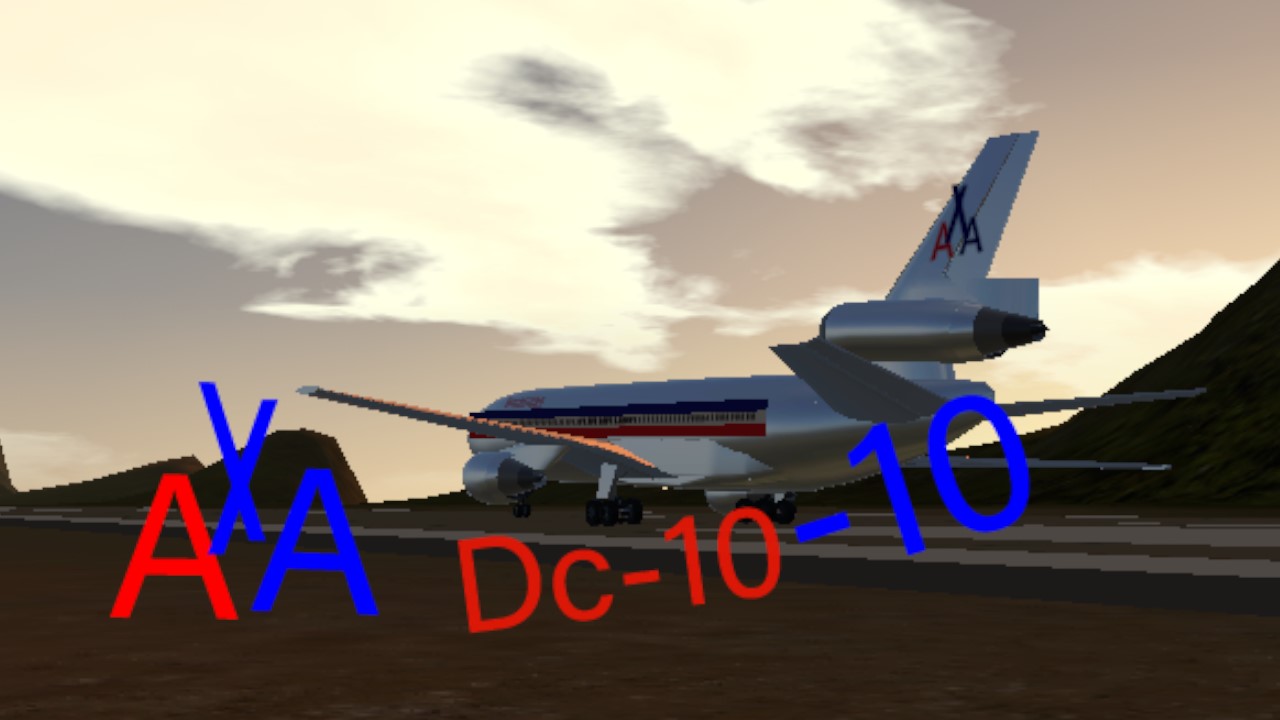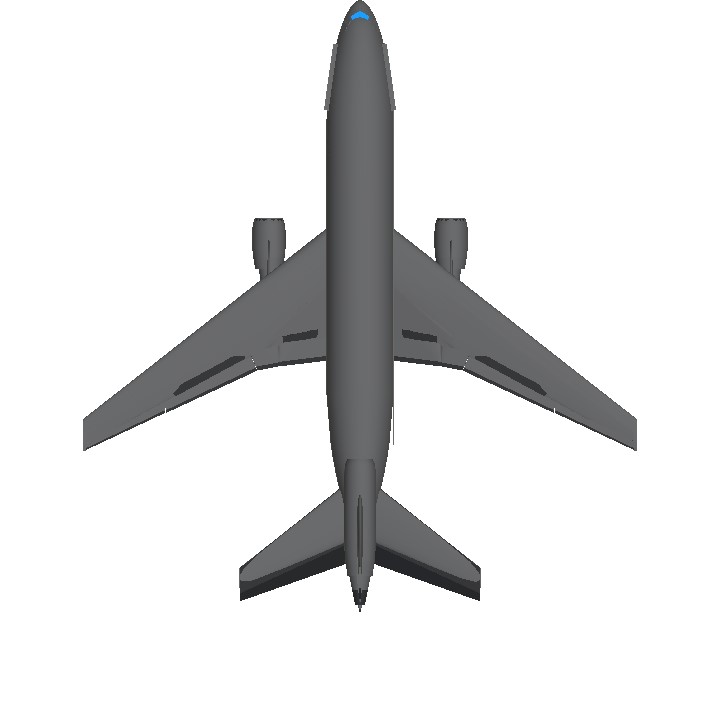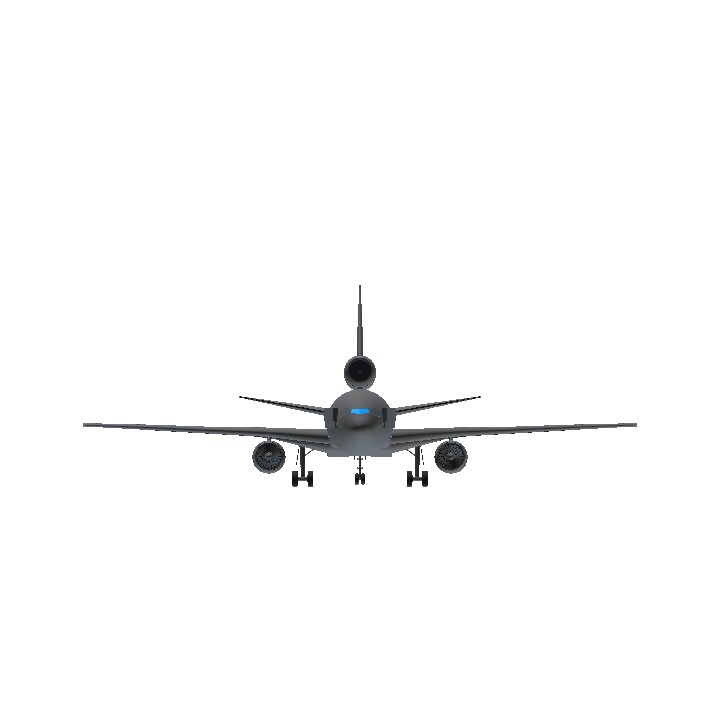Well Hello There!
Just a Dc-10-10 with a american airlines livery
Pssst don't tell anyone I used my united dc-10 for this one
The american Dream
About American Airlines Flight 191
American Airlines Flight 191 was a regularly scheduled domestic passenger flight in the United States from O'Hare International Airport in Chicago, Illinois, to Los Angeles International Airport in California. On the afternoon of May 25, 1979, the McDonnell Douglas DC-10 operating this flight was taking off from runway 32R at O'Hare International when its left engine detached from the wing, causing a loss of control, and the aircraft crashed less than one mile (1.6 km) from the end of the runway. All 258 passengers and 13 crew on board were killed, along with two people on the ground. With 273 fatalities, it is the deadliest aviation accident[a] to have occurred in the United States.
The National Transportation Safety Board (NTSB) found that as the aircraft was beginning its takeoff rotation, engine number one (the left engine) separated from the left wing, flipping over the top of the wing and landing on the runway. As the engine separated from the aircraft, it severed hydraulic lines that lock the wing's leading-edge slats in place and damaged a 3-foot (0.9 m) section of the left wing's leading edge. Aerodynamic forces acting on the wing resulted in an uncommanded retraction of the outboard slats. As the aircraft began to climb, the damaged left wing—with no engine—produced far less lift than the right wing, which had its slats still deployed and its engine providing full takeoff thrust. The disrupted and unbalanced aerodynamics of the aircraft caused it to roll abruptly to the left until it was partially inverted, reaching a bank angle of 112°, before crashing in an open field by a trailer park near the end of the runway. The engine separation was attributed to damage to the pylon structure holding the engine to the wing, caused by improper maintenance procedures at American Airlines.
Aircraft
The aircraft involved in the accident was a McDonnell Douglas DC-10-10 registered as N110AA. It was delivered on February 25, 1972, and, at the time of the crash, it had logged just under 20,000 hours of flying time over seven years. The aircraft was powered by three General Electric CF6-6D engines, one on each wing and one on the vertical stabilizer. A review of the aircraft's flight logs and maintenance records showed that no mechanical discrepancies were noted for May 11, 1979. On the day of the accident, in violation of standard procedure, the records were not removed from the aircraft and were destroyed in the accident. The precautions toward making sure the plane was in a full working environment were not taken on the left wing's engine:?76
Flightcrew
Captain Walter H. Lux (age 53) had been flying the DC-10 since its introduction eight years earlier. He had logged around 22,000 flying hours, of which about 3,000 were in a DC-10. He was also qualified to pilot 17 other aircraft, including the DC-6, DC-7, and Boeing 727.[1]:?75? First Officer James Dillard (age 49) and Flight Engineer Alfred Udovich (age 56) were also highly experienced; they had 9,275 hours and 15,000 hours, respectively. Between them, they had 1,830 hours of flying experience in the DC-10.
Accident
On the accident flight, during the takeoff rotation, the number-one engine and its pylon assembly separated from the left wing, ripping away a 3-foot (0.9 m) section of the leading edge with it. The combined unit flipped over the top of the wing and landed on the runway.[1]:?2? Robert Graham, supervisor of maintenance for American Airlines, stated:
As the aircraft got closer, I noticed what appeared to be vapor or smoke of some type coming from the leading edge of the wing and the number-one engine pylon. I noticed that the number-one engine was bouncing up and down quite a bit and just about the time the aircraft got opposite my position and started rotation, the engine came off, went up over the top of the wing, and rolled back down onto the runway... Before going over the wing, the engine went forward and up just as if it had lift and was actually climbing. It didn't strike the top of the wing on its way; rather, it followed the clear path of the airflow of the wing, up and over the top of it, then down below the tail. The aircraft continued a fairly normal climb until it started a turn to the left. And at that point, I thought he was going to come back to the airport.[9]
What was said in the cockpit in the 31 seconds leading up to the final impact is not known, as the cockpit voice recorder (CVR) lost power when the engine detached. The only crash-related audio collected by the recorder is a thumping noise (likely the sound of the engine separating), followed by the first officer exclaiming, "Damn!", at which point the recording ends. This may also explain why air traffic controllers were unsuccessful in their attempts to radio the crew and inform them that they had lost an engine. This loss of power did, however, prove useful in the investigation, serving as a marker of exactly what circuit in the DC-10's extensive electrical system had failed.[1]:?57?
In addition to the engine's failure, several related systems failed. The number-one hydraulic system, powered by the number-one engine, also failed, but continued to operate through motor pumps that mechanically connected it to hydraulic system three. Hydraulic system three was also damaged and began leaking fluid, but maintained pressure and operation until impact. Hydraulic system two was undamaged. The number-one electrical bus, whose generator was attached to the number-one engine, failed, as well, causing several electrical systems to go offline, most notably the captain's instruments, his stick shaker, and the slat disagreement sensors. A switch in the overhead panel would have allowed the captain to restore power to his instruments, but it was not used. The flight engineer might have reached the backup power switch (as part of an abnormal situation checklist, not as part of their takeoff emergency procedure) to restore electrical power to the number-one electrical bus. That would have worked only if electrical faults were no longer present in the number-one electrical system. To reach that backup power switch, the flight engineer would have had to rotate his seat, release his safety belt, and stand up. Regardless, the aircraft did not get any higher than 350 feet (110 m) above the ground and was only in the air for 31 seconds between the time the engine separated and the moment it crashed; there was insufficient time to perform such an action. In any event, the first officer was flying the airplane, and his instruments continued to function normally.[1]:?52?
The aircraft climbed to about 325 feet (100 m) above ground level while spewing a white mist trail of fuel and hydraulic fluid from the left wing. The first officer followed the flight director and raised the nose to 14°, which reduced the airspeed from 165 knots (190 mph; 306 km/h) to the takeoff safety airspeed (V2) of 153 knots (176 mph; 283 km/h), the speed at which the aircraft could safely climb after sustaining an engine failure.[1]:?53–54?
The engine separation severed the hydraulic fluid lines that controlled the leading-edge slats on the left wing and locked them in place, causing the outboard slats (immediately left of the number-one engine) to retract under air load. The retraction of the slats raised the stall speed of the left wing to about 159 knots (183 mph; 294 km/h), 6 knots (6.9 mph; 11 km/h) higher than the prescribed takeoff safety airspeed (V2) of 153 knots. As a result, the left wing entered a full aerodynamic stall. With the left wing stalled, the aircraft began banking to the left, rolling over onto its side until it was partially inverted at a 112° bank angle (as seen in the Laughlin photograph) with its right wing over its left wing.
Flight 191 after impact
Since the cockpit had been equipped with a closed-circuit television camera positioned behind the captain's shoulder and connected to view screens in the passenger cabin, the passengers may have witnessed these events from the viewpoint of the cockpit as the aircraft dove towards the ground.[10][11] Whether the camera's view was interrupted by the power loss from the number-one electrical bus is not known.[12] The aircraft eventually slammed into a field around 4,600 feet (1,400 m) from the end of the runway.[1]:?2? Large sections of aircraft debris were hurled by the force of the impact into an adjacent trailer park, destroying five trailers and several cars. The DC-10 also crashed into an old storage hangar at the edge of the airport at the former site of Ravenswood Airport. The aircraft was destroyed by the impact force and ignition of a nearly full load of 21,000 US gallons (79,000 L; 17,000 imp gal) of fuel; no sizable components other than the engines and tail section remained.[13]
The crash site is a field located northwest of the intersection of Touhy Avenue (Illinois Route 72) and Mount Prospect Road on the border of the suburbs of Des Plaines and Mount Prospect, Illinois
Specifications
General Characteristics
- Predecessor McDonnell Douglas DC-10-30
- Created On Android
- Wingspan 135.9ft (41.4m)
- Length 176.3ft (53.8m)
- Height 62.0ft (18.9m)
- Empty Weight 106,841lbs (48,462kg)
- Loaded Weight 136,919lbs (62,105kg)
Performance
- Power/Weight Ratio 0.371
- Wing Loading 42.9lbs/ft2 (209.2kg/m2)
- Wing Area 3,195.2ft2 (296.8m2)
- Drag Points 9724
Parts
- Number of Parts 296
- Control Surfaces 11
- Performance Cost 1,631







Credits to @MonikaAkiyama for da plne